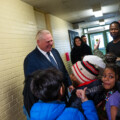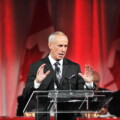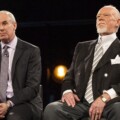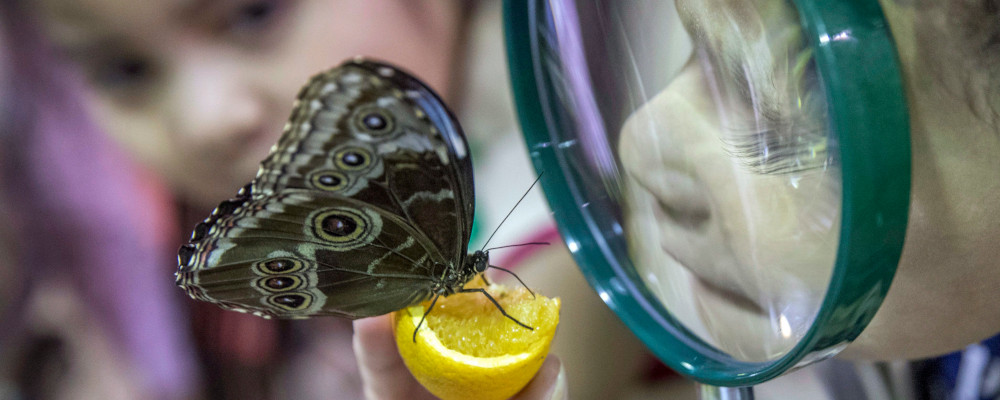An approach to K-12 education with a curriculum that pivots on the subject of history is a counterintuitive trend for our time, in which dismissing history seems to be a prized virtue. Yet the growth in this approach is exponential. And global. It’s happening in established schools, micro-schools, and home schools. Learning pods, private kindergartens, and tutorial cooperatives are getting in on it too.
The charm of this approach to education, initially proposed by the British educator Charlotte Mason (1842-1923), is that it appears to understand children and offer them just what they need, in ways almost unparalleled by other educational approaches.
Although hard to quantify the reach, for comparison, a google search in late 2022 of “Charlotte Mason” returned 79 million results while “Montessori” gave 131 million.“Montessori is a method of education that is based on self-directed activity, hands-on learning and collaborative play. In Montessori classrooms children make creative choices in their learning, while the classroom and the highly trained teacher offer age-appropriate activities to guide the process. Children work in groups and individually to discover and explore knowledge of the world and to develop their maximum potential.” https://montessori-nw.org/about-montessori-education It’s fair to say that today almost every home educator, certainly in a commonwealth country, would know Mason’s name. Alternatively, most school educators and parents in our times, although they might not yet know Mason, would certainly be somewhat familiar with Montessori’s name.
So, what is the attraction of a Charlotte Mason education?
First, the discontent with the education on offer during the pandemic sent many parents and teachers on the hunt for an alternative approach to education where kids could come alive and take some ownership of their day-to-day schooling. During their search, many ran into Mason’s approach online but then found out it was being unfolded in local independent schools or home school programs.
In short, it’s an approach that recognizes kids are hungry and curious, that they welcome exposure to (and mastery of) new things and experiences, and that they flourish when joy is a feature of their learning. The approach begins with the understanding that children are born persons ready to learn and grow with minds requiring nutrition even as the body does. The curriculum, from the beginning, is broad, putting kids in touch with nature, poetry, art, music, handicrafts, folktales, and legends, and the emphasis is relational, putting the child in relation with people from the past, the present, and the future.
And what better way to do so than through story? Her approach stimulates the emotions by creating attachment with characters from other times and places facing and overcoming challenges and a child’s interest is peaked and learning is secured, particularly when the student is asked to retell or narrate back the story or the reading. Language and oracy are enhanced and self-agency developed, as the story and the knowledge reproduced are assimilated to become the child’s own, nourishing their intellectual appetites and furnishing their minds with images and role models to which they will return when faced with decisions throughout the challenges and opportunities of their own lives.
Indeed, a Charlotte Mason education is characterized by encounters with the historical, literary, and scientific traditions through living books—pleasingly illustrated stories and histories told through literature marked by a literary voice. Textbooks take a back seat and living books take priority of place in every home or school classroom. A Book of Centuries is kept as each student records, year by year, the ideas, people, and events they encounter. The child’s education is also characterized by hours spent out-of-doors in close acquaintance with nature through nature journalling and the recording of first sightings in spring of plants and birds. In fact, a child in Mason’s program would come to know all living plants, birds, insects, and animals within a mile radius of where the classroom was located.
The uptake in popularity in our day is a fitting tribute to its founder, who died in 1923 and whose centenary is being recognized in many events and publications this year.

In the winter of 1886, Mason, an experienced educator at the time, first articulated her educational philosophy in a tremendously successful lecture series. Soon, she was the author of six books on education, the founder of a teacher college, an education journal, a curriculum, and a union for parents. At the time of her death in 1923, thousands of students across the globe including over 100 schools in the U.K. educated according to her approach.Although the explicit popularity of Mason’s ideas waned in the mid-20th century, according to Daily Herald journalist of the day, Amy Landreth, there were still over 6000 students worldwide and at least 60 schools in the U.K. following Mason’s design for education in 1965. One commentator at the time stated that “there is hardly a Girls’ School in the country that has not been directly or indirectly affected by her teaching.”In Memoriam, 1923, p. 50
“Mason showed us how happiness might permeate our classrooms, how there might be joy in learning, joy which grew from the team spirit in the classroom,” one teacher commented in 1923. Charlotte Mason reminded us in 1904, in her volume titled School Education, that “the question is not,—how much does the youth know? when he has finished his education—but how much does he care? and about how many orders of things does he care? In fact, how large is the room in which he finds his feet set? and, therefore, how full is the life he has before him?”
And if a broad curriculum filled with arts, humanities, science, and even religion that pivots on history sounds somehow as though it might prioritize the history of one culture over another, consider Mason’s words from 1911:
High intellectual attainments, amazing mechanical works rest with the persons of any nation. Therefore, we need not be surprised at the achievements of nations in the far past, or in remote countries which have not had what we consider our great advantages. This concept, of the mystery of a person, is very wholesome and necessary for us in these days; if we even attempted to realize it we should not blunder as we do in our efforts at social reform, at education, at international relations…the mystery of a person is indeed divine, and the extraordinary fascination of history lies in the fact that this divine mystery continually surprises us in unexpected places…we attempt to define a person, the most commonplace person we know, but he will not submit to bounds; some unexpected beauty of nature breaks out; we find he is not what we thought, and begin to suspect that every person exceeds our power of measurement.
Chomondeley, 1960, The Story of Charlotte Mason, p. 221
We shouldn’t be surprised, perhaps, that in our time when many are suffering from (or even prioritizing) historical amnesia, a whole counter-movement would be arising that is willing to take the risk of believing in our children and knowing that they have what it takes to encounter their heritage of stories of the past, stories from distant places including the future, and will be able to sift through to find the beauty and the good—the ennobling—and make it their own. Our job is to provide the environment and the atmosphere where this is possible.
Turns out, this might be a good year to join in with others in remembering one of history’s most influential philosophers of educationOne of the top 27 of all time among the likes of Socrates, John Dewey, Maria Montessori, and Lev Vygotsky, according to one University of Sheffield expert. and exploring what else she might have to teach us about how to teach others.
Recommended for You

Ginny Roth and Brian Dijkema: Why Ontario should allow independent schools and unlock true choice in education

‘Disloyalty to a friend’: Sean Speer on the cultural tension captured by the recent clash between Don Cherry and Ron MacLean

Sean Speer: Maybe Ron MacLean is the one who needs to go

Evan Menzies: Calgary at 150: Why is it so hard to celebrate our history?




